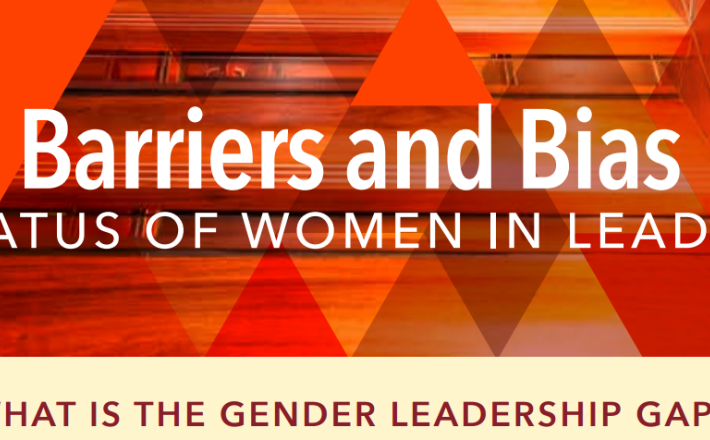Barriers and Bias: The Status of Women in Leadership
Women have been leaders throughout history, and today the tradition of volunteer female leadership continues to flourish. Yet in terms of paid leadership, women’s elevation to top positions is relatively rare. Why do men still vastly outnumber women in these positions? The American Association of University Women (AAUW)’s newest research report, Barriers and Bias: The Status of Women in Leadership, explores this question, drawing from scholarly research and paying special attention to stereotypes and biases. The report provides recommendations for individuals and those in the education, corporate, and political sectors to contribute to an environment in which gender is no longer a barrier to leadership. A panel of experts from industry, politics, and academia discussed the report’s findings, what they mean for women in leadership, and how these industries can benefit from more women leaders. Watch the video below. Click here to access the report and here for the main findings.
[[{"fid":"10818","view_mode":"default","fields":{"format":"default","field_file_image_alt_text[und][0][value]":"","field_file_image_title_text[und][0][value]":""},"type":"media","link_text":null,"attributes":{"style":"display: block; margin-left: auto; margin-right: auto;","class":"media-element file-default"}}]]

Women have been leaders throughout history, and today the tradition of volunteer female leadership continues to flourish. Yet in terms of paid leadership, women’s elevation to top positions is relatively rare. Why do men still vastly outnumber women in these positions? The American Association of University Women (AAUW)’s newest research report, Barriers and Bias: The Status of Women in Leadership, explores this question, drawing from scholarly research and paying special attention to stereotypes and biases. The report provides recommendations for individuals and those in the education, corporate, and political sectors to contribute to an environment in which gender is no longer a barrier to leadership. A panel of experts from industry, politics, and academia discussed the report’s findings, what they mean for women in leadership, and how these industries can benefit from more women leaders. Watch the video below. Click here to access the report and here for the main findings.
[[{"fid":"10818","view_mode":"default","fields":{"format":"default","field_file_image_alt_text[und][0][value]":"","field_file_image_title_text[und][0][value]":""},"type":"media","link_text":null,"attributes":{"style":"display: block; margin-left: auto; margin-right: auto;","class":"media-element file-default"}}]]